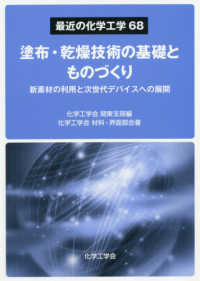Full Description
This book provides an introductory exploration of nuclear reactor theory, designed for students, physicists, and engineers entering the field for the first time. It employs simplified models based on diffusion theory to facilitate numerical calculations, with direct applications to pressurized water reactors. A consistent dataset underpins the analyses throughout the text, ensuring coherence across topics.
This book offers a fundamental understanding of key reactor physics concepts, including the fundamental mode, harmonics, point kinetics, adjoint flux and perturbation method. It also examines reactor behavior in subcritical approach conditions, Dynamic Rod Weight Measurement, shadowing and anti-shadowing effects.
To maintain conciseness, the text does not cover the fundamental principles of nuclear physics required for neutronics. Readers are expected to have prior knowledge of essential topics such as the fission process and neutron cross sections. Synthetic presentations of the mathematical and physical concepts used in the book are provided in the different appendices.
Contents
1.A few calculations with monokinetic neutrons.-2.Neutron density, flux and current.- 3.Fission spectrum and thermal spectrum.- 4.Slowing down and thermalization.- 5.Resonant absorption. Doppler feedback effect.- 6.Diffusion current and flux gradient. Fick's law applied to neutronics.- 7.Equations expressing the conservation of neutrons.- 8.Source neutrons in a scattering and absorbing medium.- 9.The theory of age.- 10.The theory of diffusion applied to fissile systems with monoki-netic neutrons.- 11.Boundary conditions.- 12.Two Groups diffusion.- 13.The critical reactor with two neutron groups.- 14.From diffusion theory to point kinetics.- 15.Subcritical reactor.- 16.Highlighting of harmonics.- 17.Effects of control rods.- 18.Poisoning of the reactors.- 19.Dynamic Rod Weight Measurement.- 20.Adjoint flux and perturbation method.








